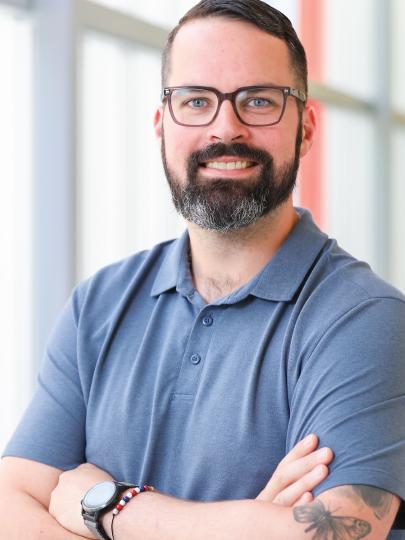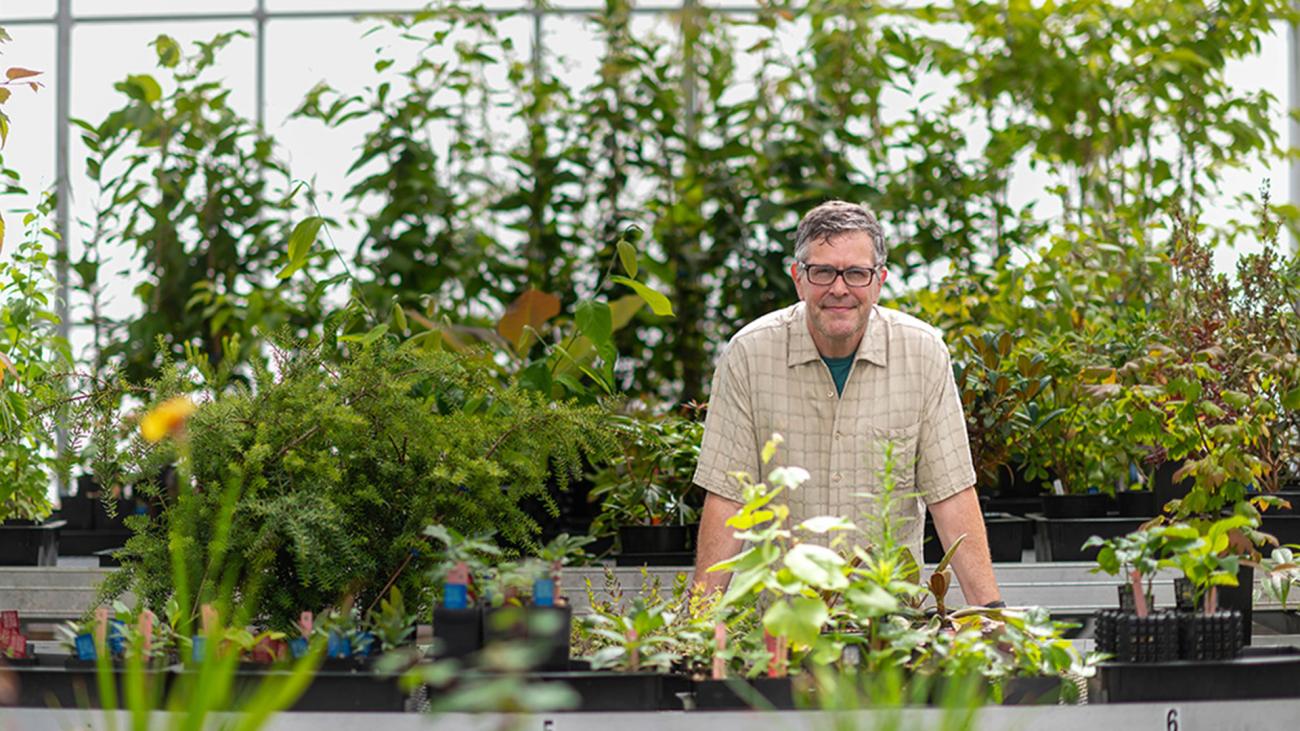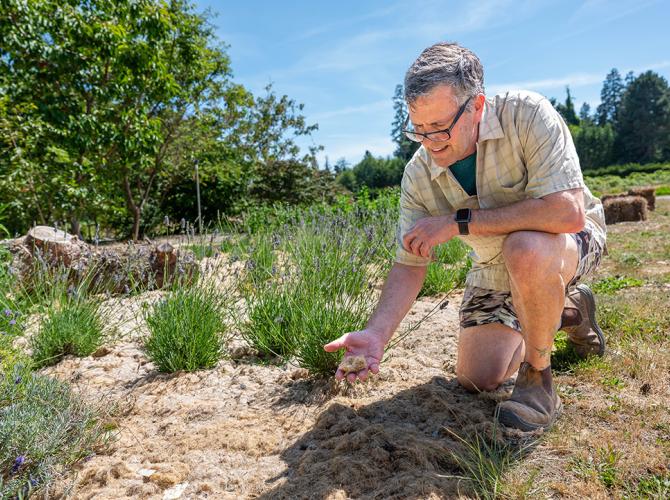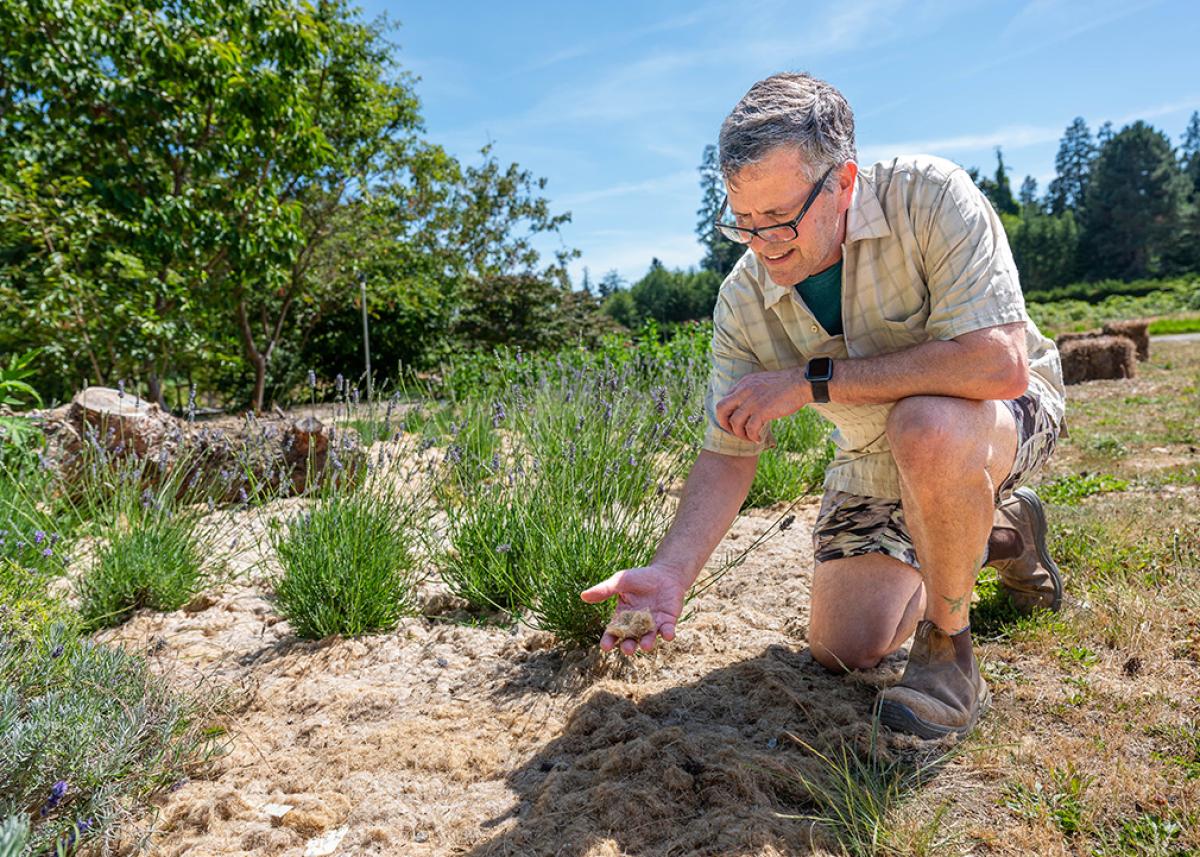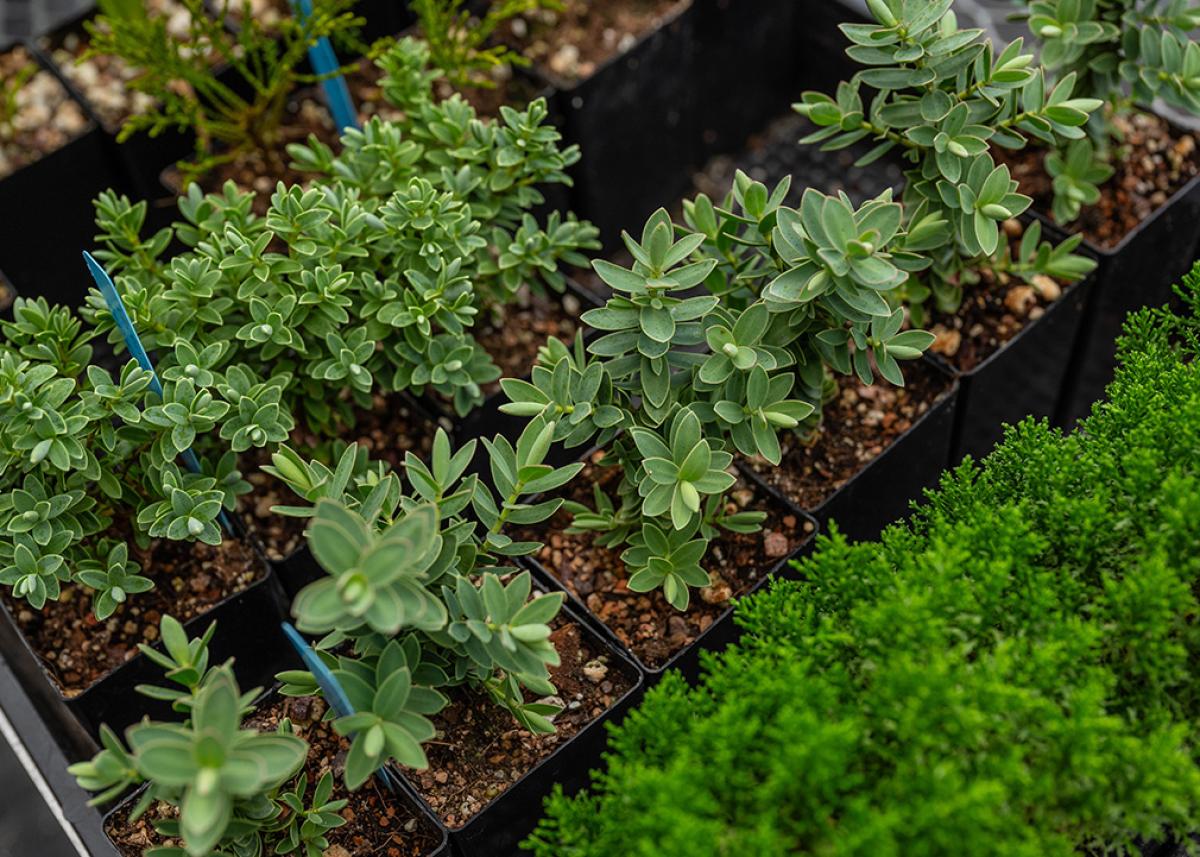Planning and planting ideas for a more sustainable future
How UBC alum Kevin Kubeck, the Botanical Garden’s Nursery Horticulturalist, is taking steps to reduce harm while enhancing plant and people health at UBC.
Kevin Kubeck (BSc'13) is a man on a mission. As one of UBC’s most experienced horticulturalists, he is the green engine that drives plant production at the UBC Botanical Garden nursery.
Kubeck is not only responsible for the propagation of up to 8,000 new plants per year, but he is also personally driven to mitigate environmental damage, improve working conditions, and navigate plant health amidst the inevitability of rising global temperatures; it’s a tall order, but for Kubeck, harm reduction is not only paramount to the future success of the UBC Botanical Garden and its nursery, but also to the wellbeing of everyone who works there.
Kubeck is responsible for turning germplasm (i.e., seed collections) into thriving plants for the botanical garden. As the Garden acquires seeds from all over the world, a big part of his role entails determining how to coax a variety of seeds to germinate in our local conditions. Once propagated, Kubeck also maintains diligent records of their accession. “I’m classically trained in horticulture and have a clear understanding of how to run a successful and productive operation, but industry standards and environmental concerns have evolved significantly over the years and have compelled me to re-think traditional practices,” observes Kubeck. “Plus, I’ve had to learn to be comfortable with losing a bit of my old self to explore new ways of achieving things.”
Kubeck’s work is a labour of love that stems from his early beginnings gardening with his grandparents as a young child, to his eventual training and career in Botany, Applied Biology, landscaping, and greenhouse production. He first arrived at UBC in 1999 as a landscape technologist before landing a role in the Botanical Garden nursery.
Since his start, Kubeck has been determined to find small, but impactful solutions to improve nursery practices and operations. “My lifelong affection towards nature and gardening has meant that I’ve always had a tendency towards living a sustainable and environmentally-focused life,” he says. “Despite my limited resources and budget, I’m on a perpetual quest to explore new ideas and take action within the scope of my role… without detracting from my annual production quotas or the quality of my yield.”
One of Kubeck’s first objectives was to eliminate single-use plastics and plastic waste within the nursery. He appealed to management and requested a switch to a more sustainable style of plant pot. He also fought for pot washing despite the mammoth amount of labour the task would require. “For the first year, I hand-washed every single one of our pots because it was the right thing to do and to prove it could be done,” Kubeck recalls. “Since 2013, I must have single-handedly washed more than 50,000 pots!”
Another pivotal change he employed was the introduction of coco coir (coconut fibre extracted from the outer husk of coconuts) as a replacement for peat. This eco-friendly substitution makes up for the bulk of the organic portion of the planting mixes he develops, reducing the Botanical Garden’s peat usage by 90 per cent.
Furthermore, Kubeck has also been trialling coco fibre matting as a weed barrier, thereby drastically reducing the use of herbicides. And while his choice to adopt “coco-mats” has thrown a few curveballs his way (e.g., its effects on soil saturation and challenging mineral composition), he still feels it’s the better choice from a harm reduction perspective. He notes, “Coco-mats can be salvaged from the inside layers of mattresses, so the Botanical Garden has partnered with local manufacturers to upcycle this by-product. It means we’re not only diverting waste from landfills, but we’re also finding unique and safer ways to combat pests in our fields.”
With rising global temperatures, it’s no surprise that heat mitigation, climate forecasting, and rainwater harvesting are next on his list. “We’re beginning to examine heat models for 2050 and 2090,” says Kubeck. “For example, under a new heat and rain regimen, many of our larger canopy trees may, in fact, disappear, so we’re now in a position where we need to map out future considerations — like heat-tolerant media — and determine how this may impact nursery production.”
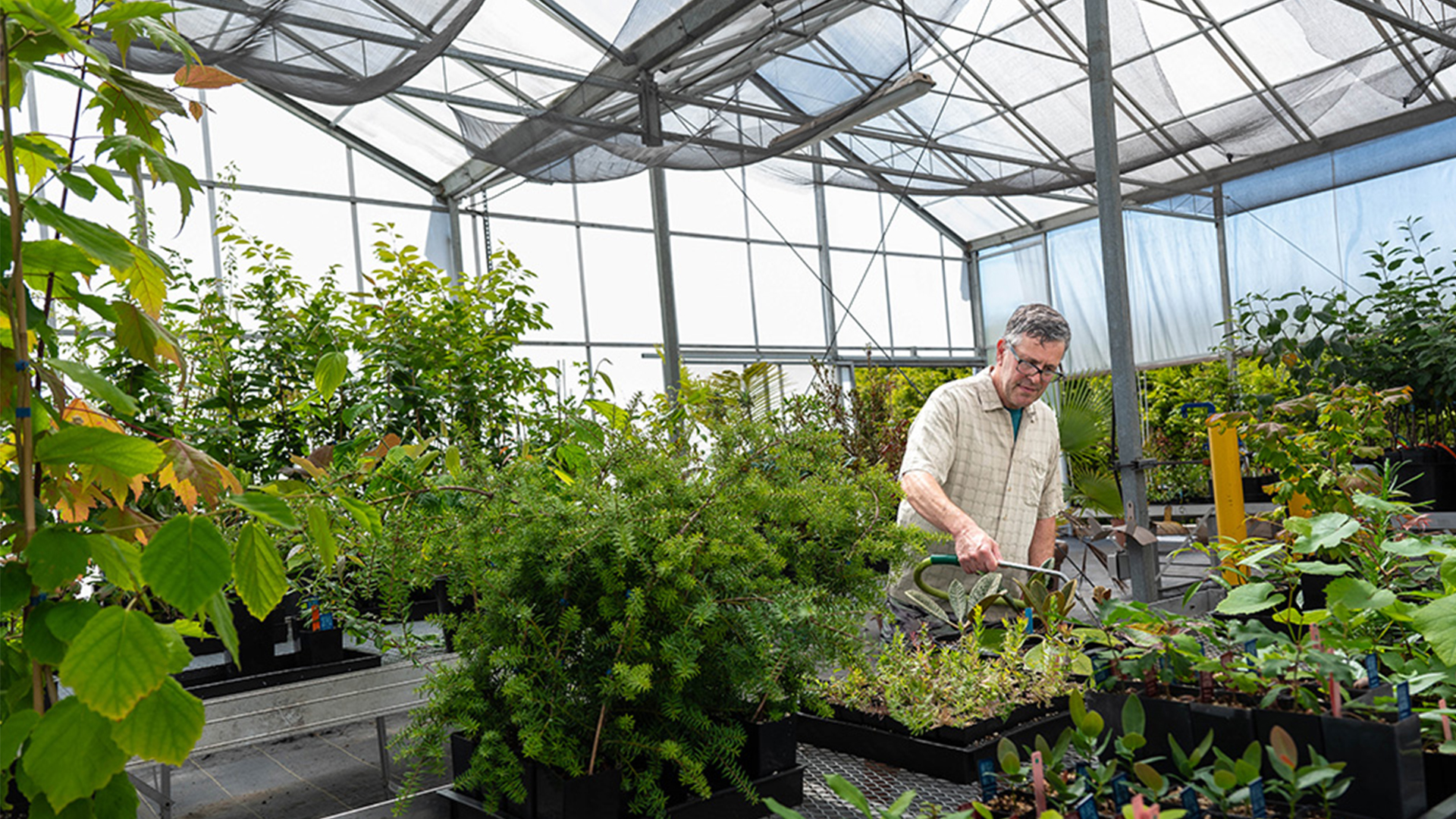
Now in his 25th year at UBC, Kubeck continues to advocate for safer and more sustainable choices. “There’s an art to it, and I wish I was better equipped to be able to achieve more and at a more expedient pace.” He continues, “I want to help others feel empowered to influence sustainability decisions in their area of the university. There are likely others who might empathize with similar challenges and limited resources, but recognize they too can influence decisions that change how we do things here.”
“My dream would be to see a lush and rich biodiverse forest on the south side of campus again, but until that happens, I’ll still be here, boots on the ground, sweeping floors, washing pots, and doing my part to set us up for a future of better health and success.”
This article was originally published on UBC Today and is part of a five-story series recognizing faculty and staff who are advancing sustainability at UBC.


